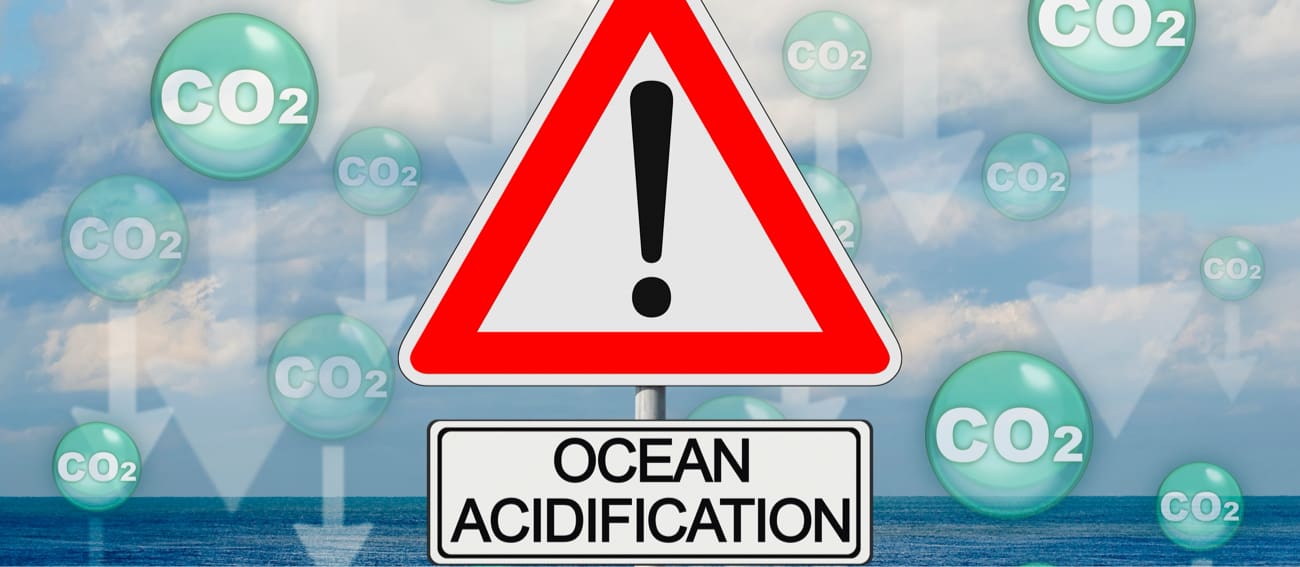Acidificació dels oceans
Objectiu: aquest experiment pretén crear un model d’interacció oceà-atmosfera per entendre com l’augment de la concentració de diòxid de carboni afecta l’aigua.

-
Materials de laboratori
Dos gots de plàstic transparent
Vasos petits de paper o plàstic
Cinta adhesiva
Una placa de Petri per cobrir els gots de plàstic
Probeta graduada i espàtules
-
Reactius
Bicarbonat de sodi
vinagre
Blau de bromotimol
Hidròxid de sodi (NaOH)
-
Seguretat
No oblideu els guants, la bata de laboratori i les ulleres de seguretat!!!
-
Preguntes
Quin gas està evolucionant?
Quins canvis estan passant a l'aigua?
Procediment
- Prepareu la solució indicadora dissolent 2 llenties de NaOH en 1L d’aigua i afegint una petita quantitat de blau de bromotimol fins que s’observi un color blau clar (vegeu la imatge de dalt).
- Aboqui 40-50 ml de solució d’indicador àcid-base a la tassa de plàstic transparent.
- Afegiu una culleradeta (uns 4 grams) de bicarbonat de sodi a la tassa petita.
- Introduïu la tassa petita en una de les tasses de plàstic transparent que contenen la solució indicadora de manera que la part superior de la tassa de paper estigui aproximadament 1 centímetre per sota de la part superior de la tassa de plàstic. Assegureu-vos que la part inferior del got de paper no toqui la superfície del líquid del got de plàstic (vegeu la imatge de dalt).
- Afegiu amb cura 10 ml de vinagre blanc a la tassa petita que conté el bicarbonat de sodi. Tingueu molta cura de no vessar cap vinagre a la solució indicadora.
- Col·loqueu immediatament una placa de Petri a sobre de cada got de plàstic.
Explicació teòrica
Aquesta activitat il·lustra com la difusió de CO 2 a l’aigua pot provocar l’acidificació dels oceans. També modela part del cicle del carboni a curt termini, concretament la interacció entre la nostra atmosfera i la superfície de l’oceà.
La barreja de vinagre i bicarbonat de sodi a la tassa de paper crea diòxid de carboni (CO 2 ). Aleshores, el gas CO 2 es difon al líquid de sota. Quan el gas CO 2 es difon a l’aigua, es produeix la següent reacció química que dóna lloc a àcid carbònic (H 2 CO 3 ):
CO 2 (aq) + H 2 O → H 2 CO 3
L’àcid carbònic es dissocia en protons (H+) i ions bicarbonat (HCO3 –). L’augment de la concentració de protons fa que la solució sigui més àcida. L’àcid carbònic és un àcid feble. Tanmateix, la presència d’aquest àcid afecta el pH de la solució. Així, al cap de poc temps, la superfície de la solució indicadora canvia de color. Aquest canvi de color indica un canvi de pH causat per la difusió del gas CO 2 al líquid.

Creem un futur més brillant
Uneix-te al nostre equip per treballar amb investigadors reconeguts i fer front a les novetats
projectes i contribuir a avenços científics significatius














